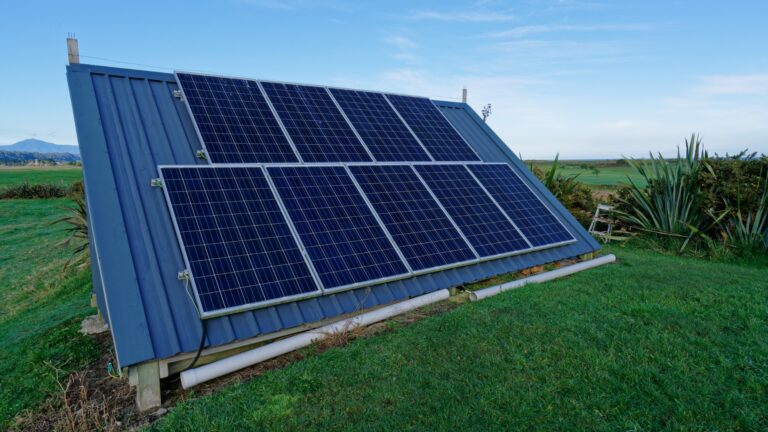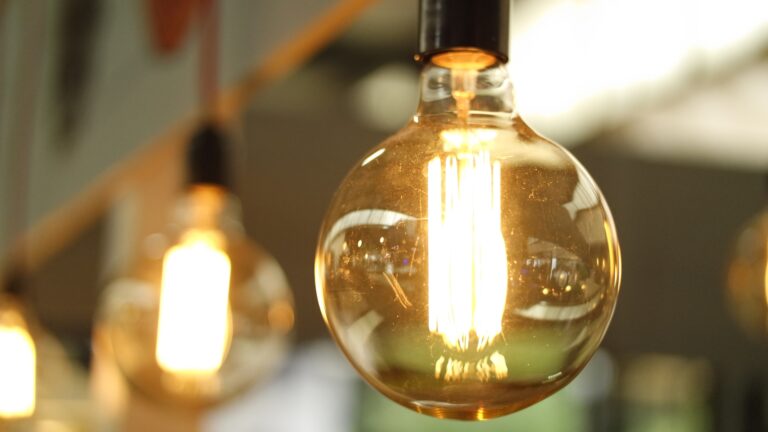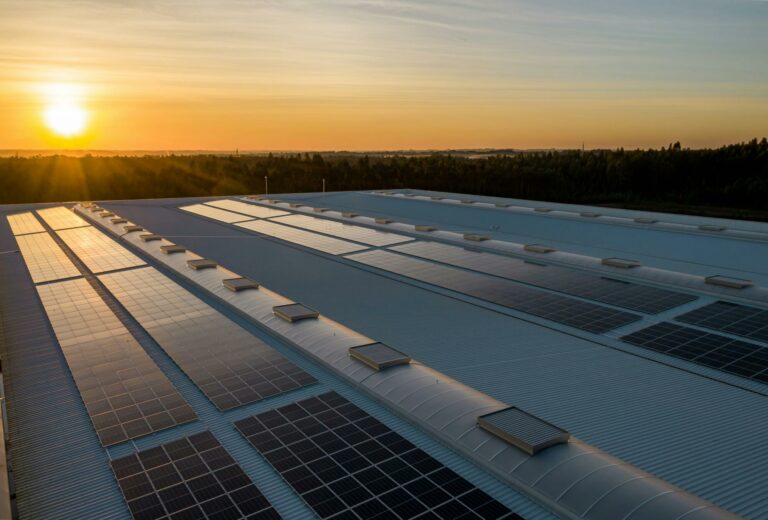Managing energy costs and efficiency is a common challenge for many commercial property owners and homeowners in Indiana. Distributed generation (DG) offers an innovative solution by producing electricity close to where it’s used.
This blog will explore how DG can transform energy management, providing benefits like cost savings and reliability. Keep reading to discover how this technology could change the game for you.
Key Takeaways
- Distributed Generation (DG) produces electricity close to where it’s used, offering an efficient and reliable energy solution for homeowners and commercial property owners in Indiana. With technologies like solar panels, wind turbines, and small hydroelectric systems, DG cuts down on transmission losses and infrastructure costs.
- Adopting distributed generation enables individuals to participate in net metering policies. This means they can sell excess electricity back to the utility grid, providing a revenue stream while promoting private investment into renewable energy solutions.
- Technologies such as cogeneration produce both heat and power from a single source; this maximizes fuel utility by significantly reducing greenhouse gas emissions associated with traditional energy production methods.
- Integrating distributed generation into the existing grid poses challenges but offers significant opportunities for sustainability. Solutions like microgrids provide reliability during outages or peak times by operating independently from the central power grid.
What is Distributed Generation?
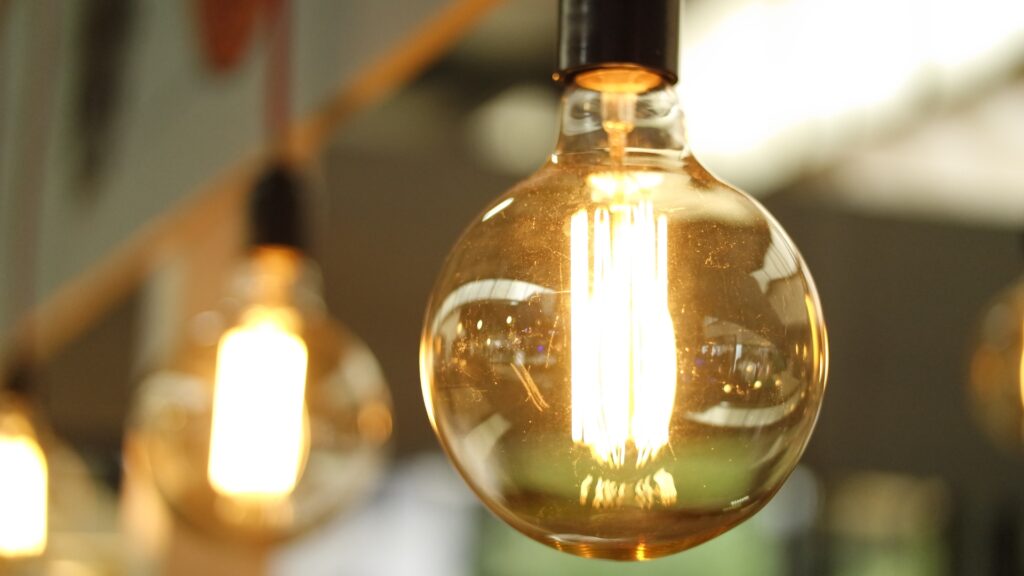
Distributed generation transforms how we produce and use energy in our homes and businesses. It allows smaller energy sources to supply power close to where it’s used, making the system more efficient and reliable.
Definition and overview
Distributed generation plays a crucial role in modern energy systems by producing electricity close to where it is used. This approach contrasts with traditional centralized power systems that generate energy in large facilities far from consumers.
By tapping into local resources, distributed generation brings multiple benefits, including enhanced efficiency and reduced transmission losses.
This method involves various small-scale technologies such as solar panels on rooftops or wind turbines on local farms. These installations can supply power directly to commercial buildings and homes, making the grid more resilient and flexible.
As a response to increased demand for sustainable and reliable energy solutions, states like California are leading by example, mandating utilities to incorporate storage and other distributed resources for better peak demand management.
This shift marks a significant transformation in how we produce and consume energy, emphasizing the importance of adapting our infrastructure toward greener alternatives.
Benefits of distributed generation
Distributed generation brings power closer to home, literally. By generating energy near its point of use, it cuts down on the electricity lost during transmission over long distances.
This efficiency not only means fewer sprawling power lines across landscapes but also leads to significant savings in infrastructure and maintenance costs. With technologies like solar panels and wind turbines becoming more accessible, homeowners and commercial property owners in Indiana have a golden opportunity to leverage these advancements for their benefit.
Moreover, adopting distributed generation allows property owners to participate in net metering policies. These policies enable them to sell excess electricity generated at their sites back to the utility grid at a predetermined rate.
This arrangement not only provides an additional revenue stream but also encourages private investment into renewable energy solutions like photovoltaic systems. By reducing upfront costs through third-party ownership models, residential deployment of these technologies becomes more feasible than ever before.
Now, let’s explore the types of distributed energy resources available to Indiana’s residents and businesses.
Types of distributed energy resources (DERs)
Distributed energy resources (DERs) are changing how we manage and consume electricity in Indiana. These systems harness renewable energy sources to provide reliable power both to commercial properties and homes, supporting the electric power distribution system effectively. Here’s a look at the various types of DERs:
Solar Power: Solar panels capture sunlight and convert it into electricity. This technology is perfect for Indiana’s sunny days, offering a clean energy source that can reduce electricity bills.
Wind Power: Wind turbines use air flow to generate electricity. While more common in open, rural areas, small-scale wind systems could also benefit Indiana properties with enough space.
Small Hydro: Small hydroelectric systems generate power by channeling water flow through turbines. Though dependent on location near water bodies, they offer a continuous power supply for those situated near rivers or streams.
Geothermal Power: By tapping into the earth’s heat below the surface, geothermal systems can provide a steady energy supply with minimal environmental impact—ideal for heating and cooling needs in Indiana homes and businesses.
Each type of distributed energy resource offers unique benefits and opportunities for Indiana commercial property owners and homeowners to manage their energy needs sustainably and cost-effectively.
Technologies for Distributed Generation

Exploring the right technologies makes all the difference in distributed generation. Each option offers unique advantages for keeping energy clean and efficient.
Solar Power
Moving from cogeneration, solar power stands out as a key player in the field of distributed generation. Solar panels capture sunlight and convert it into electricity right where it’s needed, making this technology an ideal choice for commercial property owners and homeowners in Indiana.
This method not only reduces reliance on traditional energy sources but also benefits the environment by producing clean, renewable energy.
In Indiana, solar power connects seamlessly with the electric grid thanks to state-specific technical procedures and legal requirements. Property owners can take advantage of net metering policies that offer incentives for investing in solar installations.
By allowing customers to sell excess electricity back to the utility at a set price, these policies make solar power an even more attractive option. Furthermore, numerous financial programs support the adoption of solar technology across residential, commercial, industrial, and governmental sectors.
These initiatives help overcome market and regulatory barriers, encouraging more properties in Indiana to transition towards sustainable energy solutions through solar power.
Wind Power
Wind power stands out as a key player in the world of distributed generation, offering a clean and sustainable energy source for commercial property owners and homeowners in Indiana.
Harnessing the wind to generate electricity doesn’t emit harmful pollutants or greenhouse gases, making it an environmentally friendly choice. With Indiana’s varying landscapes and open spaces, many areas are well-suited for installing small to medium-sized wind turbines.
These can either complement existing power sources or serve as a primary energy supply, depending on location and wind conditions.
The process involves converting kinetic energy from the wind into electrical power through turbines – a straightforward yet efficient method. Property owners have the chance to reduce their reliance on traditional power grids while also cutting down on utility expenses over time.
Additionally, advancements in technology make wind turbines more accessible than ever before; they come in various sizes to fit different property needs and preferences. Investing in wind power not only contributes to cleaner air but also supports local economies by creating jobs related to installation and maintenance of these systems.
Hydro Power
Moving from the airy heights of wind power, hydro power offers a transition to using the natural flow of water as a potent source of energy. As a small-scale renewable resource, hydro power stands out for its ability to provide constant and reliable electricity generation.
Indiana’s commercial property owners and homeowners have an opportunity to tap into this sustainable energy through state-supported programs and policies. These initiatives aim at integrating hydro power generation into both new and existing buildings, showcasing government leadership in promoting green energy solutions.
State regulations lay out specific interconnection procedures for small-scale hydro projects wishing to connect with the electricity grid. This ensures that adding hydro power capabilities is not only feasible but also compliant with technical standards.
Furthermore, various financial incentives are available to encourage the adoption of hydro power across different sectors including residential, commercial, and industrial fields. By exploring these opportunities, Indiana’s communities can make significant strides towards efficient and sustainable energy management practices that contribute positively to their environmental footprint while potentially lowering utility costs.
Energy Storage
Transitioning from waste-to-energy concepts, energy storage emerges as a pivotal technology in the landscape of distributed generation. Energy storage systems enable commercial property owners and homeowners in Indiana to capture electricity when it’s abundantly available, either from the grid or renewable sources, and store it for use during peak demand times or power outages.
These technologies, including flywheels and batteries, not only ensure a constant supply of electricity but also play a crucial role in mitigating grid integration issues by maintaining stable voltage profiles.
By harnessing energy storage solutions, stakeholders can significantly reduce their reliance on traditional power grids and enhance their energy independence. This advancement supports a more sustainable approach to managing power needs while potentially lowering utility costs.
As the interest in distributed generation grows among Indiana residents and business owners, understanding the strategic benefits of integrating energy storage into their systems becomes paramount for optimizing performance and achieving greater control over their energy resources.
Integration and Management of Distributed Generation
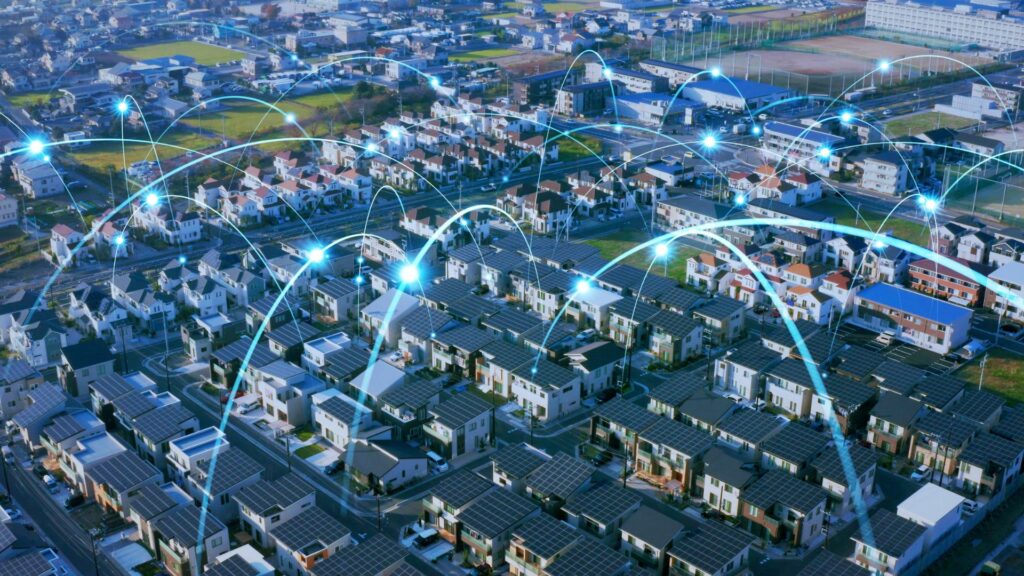
Successfully integrating and managing distributed generation requires smart strategies to tackle the challenges it presents.
Challenges and solutions
Integrating distributed generation (DG) into the existing energy grid poses several challenges for homeowners and commercial property owners in Indiana. Market and regulatory barriers often hinder the implementation of small-scale renewable projects, making it tough to connect these systems to the grid.
Interconnection procedures can be complex, requiring detailed understanding and navigation of legal requirements.
Solutions are emerging to ease these obstacles. State and local governments have the power to support DG by implementing favorable policies, such as net metering. This policy incentivizes private investment in renewable technologies by allowing surplus energy generation to be sold back to the grid.
Flexible financing options bring economies of scale, fostering innovation and competition in the energy sector. Together, these efforts make a diversified energy future more achievable for Indiana residents.
Microgrids
Microgrids stand out as a significant leap forward in energy management, especially appealing for commercial property owners and homeowners in Indiana. These systems can operate independently from the central power grid, offering stability and reliability during outages or peak demand times.
Microgrids include various energy sources like solar panels, wind turbines, stationary batteries, and fuel cells. This mix allows properties to maintain power even when disconnected from the main grid.
Implementing microgrids brings an added layer of energy security to local communities. They not only ensure continuous electricity supply but also pave the way for adopting renewable energy sources more seamlessly into daily use.
For regions aiming to enhance their energy sustainability while cutting down on carbon emissions, microgrids present an effective solution.
Communication in DER Systems
Effective communication in DER systems is crucial for their smooth functioning. Communication technologies enable the various components of a distributed generation system, such as solar panels, wind turbines, and energy storage units, to talk to each other and to the wider electricity grid.
This ensures that electricity generated from these resources is efficiently integrated into the grid, optimizing power distribution and reducing waste.
For commercial property owners and homeowners in Indiana, this means better reliability and potentially lower energy costs. Advanced communication also allows for real-time monitoring of energy production and consumption.
This information can guide decisions on when to use stored energy or feed excess power back into the grid for credits. Such smart management of distributed energy resources leads to more sustainable and cost-effective energy usage.
Legal Requirements
Before you start generating your own energy, you need to understand the legal requirements in Indiana. Each state sets its own rules for small-scale renewable energy projects connecting to the grid.
This includes how to apply, what equipment is approved, and safety standards to meet. In Indiana, these procedures ensure that everyone’s system works well together without causing issues on the local power grid.
Net metering policies are another crucial aspect commercial property owners and homeowners should know about. These policies let you sell any extra energy your system produces back to the utility company at a set price.
This can make investing in technologies like solar panels more attractive by helping offset costs over time. States like Colorado and California have already set mandates requiring a certain percentage of power be generated through distributed generation sources by specific dates, showing a growing trend toward these systems.
The Future of Distributed Generation
The future of distributed generation promises big changes for how we manage and use energy. With potential growth, this method will shape the way commercial property owners and homeowners in Indiana approach their power needs.
Potential growth and impact
Distributed generation is set to revolutionize how homeowners and commercial property owners in Indiana manage energy. With its promise for greater flexibility and reliability, this approach aligns with the increasing demand for sustainable and efficient energy solutions.
States like California are leading the way, having already passed legislation focusing on storage and distributed resources to meet peak demands. This sets a clear precedent that could inspire similar policies across the nation, including Indiana.
As these technologies advance, they will likely become more accessible and cost-effective for everyday users. This shift could significantly impact local energy grids by allowing users not only to consume energy but also to produce it, turning traditional consumption patterns on their head.
Federal discussions around distributed generation highlight its potential role in transforming consumers into proactive participants within the grid system. For folks in Indiana, this represents an opportunity to be at the forefront of an evolving energy landscape where managing consumption becomes as important as how we generate power.
Policy implications
As the potential for distributed generation continues to expand, it becomes crucial for policymakers to catch up with this technological evolution. State and local governments have a significant role in shaping the environment for these systems through policies and programs.
They can address market and regulatory barriers, making it easier for commercial property owners and homeowners in Indiana to adopt distributed generation technologies. Interconnection standards set by each state dictate how small-scale renewable energy projects connect to the larger electricity grid, impacting ease of access for individuals looking to invest in such systems.
Net metering policies serve as an incentive by allowing those who generate their own electricity to sell any excess back to the utility at a predetermined price. This arrangement promotes private investment into renewable energy technologies among residents of Indiana.
By understanding these policy implications, commercial property owners and homeowners can better navigate the opportunities presented by distributed generation, contributing positively towards sustainable energy management within their communities.
Conclusion
Harnessing distributed generation transforms how we manage energy, making systems more efficient and sustainable. Have you considered the impact adopting such technologies could have on your property or community? Distributed generation offers practical solutions for energy needs, with financial incentives making it an attractive choice.
Engaging with these technologies not only reduces costs but also supports a cleaner environment. Let this exploration of distributed generation inspire you to consider its potential in revolutionizing energy management for a better future.
FAQs
1. What is distributed generation?
Distributed generation is when electricity is produced close to where it will be used, rather than at large power plants.
2. How does distributed generation benefit me?
It can lower energy costs, improve reliability, and reduce emissions by generating power near its point of use.
3. Can I use renewable energy sources for distributed generation?
Yes, you can use renewable sources like solar panels or wind turbines for distributed generation.
4. Does distributed generation work during a power outage?
Yes, systems designed with backup storage or those independent of the grid can provide power during outages.
5. What do I need to start using distributed generation in my home or business?
You’ll need suitable technology like solar panels or a small wind turbine and possibly permission from your local utility company to connect your system to the grid.

